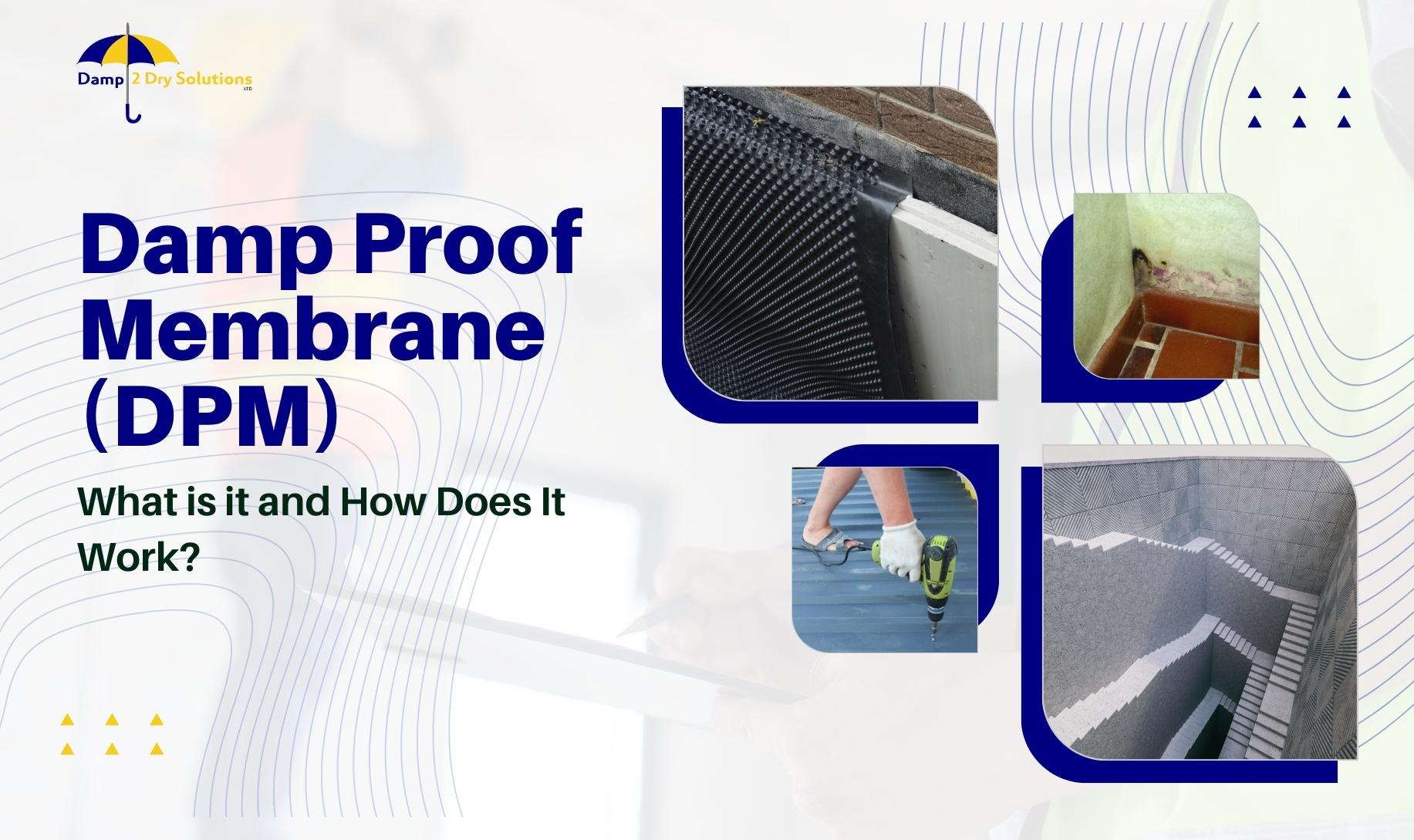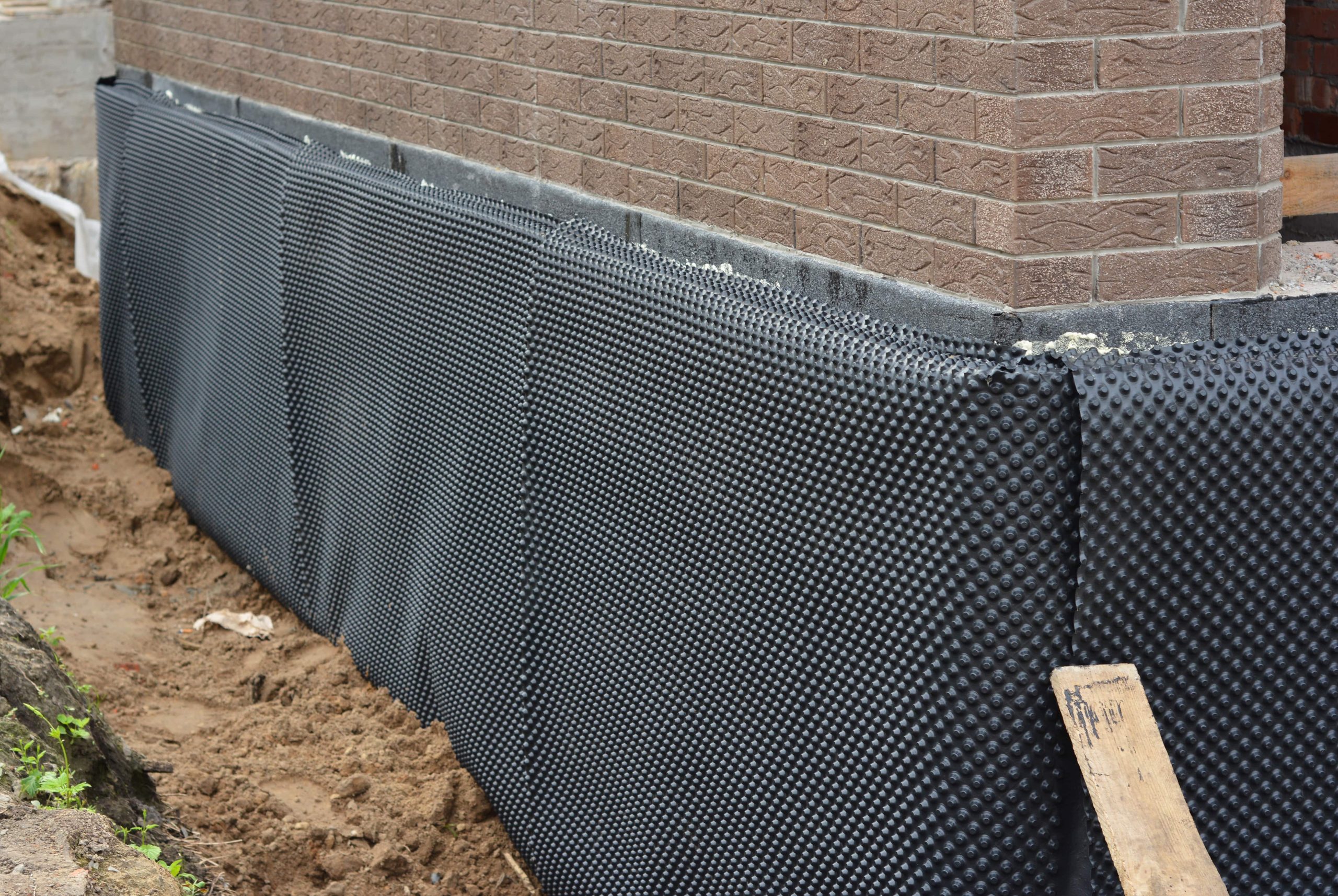Checking Out the Different Methods and Solutions for Effective Damp Proofing
Moisture in structures presents considerable difficulties to both architectural stability and indoor air high quality. Different methods and options have emerged to combat this pervasive issue. From traditional damp-proof membrane layers to cutting-edge chemical therapies, each technique provides distinct advantages. Understanding these alternatives is crucial for reliable wetness control. Choosing the right remedy depends on certain building conditions and requirements, triggering further expedition into the most reliable moist proofing strategies readily available.
Comprehending the Causes of Wetness
Moisture can arise from different sources, comprehending these causes is crucial for effective removal. Commonly, dampness originates from three primary sources: increasing wet, penetrating wet, and condensation. Rising damp happens when groundwater travels up-wards through porous products, such as brick or rock, frequently as a result of a lack of a reliable barrier (damp specialist newcastle). Penetrating moist is commonly triggered by exterior factors, including roof covering leaks, defective seamless gutters, or harmed walls, enabling water to penetrate a home. Condensation, on the various other hand, arises from excess moisture in the air, typically aggravated by poor ventilation and temperature differences, causing water beads creating on surfaces. Identifying these underlying problems is necessary, as each kind of wetness requires a tailored approach for remediation. Proper evaluation assists in figuring out one of the most reliable remedies, inevitably safeguarding the structural integrity of a building and enhancing indoor air quality
Traditional Damp-Proof Membranes

Chemical Damp-Proofing Solutions
Chemical damp-proofing remedies supply a cutting-edge approach to avoiding moisture intrusion in buildings. These methods normally include the application of liquid chemicals that penetrate stonework and develop a barrier against climbing wet. Frequently utilized chemicals include silanes, siloxanes, and various other water-repellent representatives that react with surface products to produce a hydrophobic layer.The application process usually calls for boring holes right into the wall surfaces, injecting the chemical solution, and permitting it to heal. This technique is particularly useful for older frameworks where conventional damp-proof membranes might be impractical. Furthermore, chemical damp-proofing can be much less disruptive and extra economical than comprehensive renovation projects.While reliable, these services depend on appropriate application and environmental problems for peak performance. Regular upkeep and tracking are vital to ensure the long life of the damp-proofing treatment. Generally, chemical damp-proofing represents a flexible alternative for safeguarding structures versus moisture-related damage
Tooth Cavity Wall Surface Construction Methods
Dental caries wall building strategies offer many benefits, particularly in wetness control and power efficiency. By including an air gap between two layers of stonework, these wall surfaces efficiently alleviate water ingress while boosting insulation. This mix not just protects frameworks from moisture yet additionally contributes to minimized power intake.
Advantages of Cavity Walls
When thinking about efficient moist proofing techniques, the benefits of tooth cavity wall surfaces attract attention plainly. Dental caries wall surfaces are composed of 2 different layers, developing an air void that effectively reduces moisture penetration. This design minimizes the risk of dampness, as the external wall surface works as an obstacle versus rain and water ingress. Additionally, cavity walls boost thermal insulation, which adds to power effectiveness by decreasing warm loss. They also provide audio insulation, aiding to produce a quieter interior atmosphere. The air space allows for air flow, which helps in wetness control and reduces the likelihood of mold and mildew growth. These benefits not just enhance the overall convenience of a structure but additionally add to its longevity and architectural stability.
Moisture Control Approaches
Reliable wetness control approaches are important in cavity wall building and construction to ensure lasting protection versus dampness. One main method includes the unification of weep holes, which help with water drain from the cavity, avoiding build-up. In addition, the use of breathable membranes can aid manage moisture degrees while permitting trapped vapor to leave. Correct placement of insulation is likewise essential, as it should not obstruct drain courses. Making certain that the external fallen leaves of the cavity wall are built with water-resistant products improves general resilience. Regular upkeep checks are necessary to identify any blockages or damage early, protecting the structure's integrity. Ultimately, a combination of these techniques forms a robust defense against moisture breach in dental caries wall surfaces.
Insulation and Power Performance
Insulation plays an essential duty in boosting power effectiveness within tooth cavity wall building. By incorporating insulating products, these wall surfaces produce a thermal obstacle that decreases warmth loss and minimizes energy consumption. Effective insulation not just assists preserve a stable interior temperature level however also mitigates the threat of wetness, as it stops condensation within the wall cavity. Numerous methods, such as making use of inflexible foam boards or mineral woollen, can be utilized to achieve ideal insulation efficiency. Furthermore, proper installment is necessary to ensure that spaces and voids are lessened, which can otherwise endanger energy efficiency. Inevitably, a well-insulated tooth cavity wall adds significantly to overall sustainability and reduces heating & cooling costs for home owners.
Outside Damp Proofing Methods
Outside damp proofing techniques are important for shielding structures from dampness infiltration. 2 efficient strategies include the application of water-proof membranes and the installment of French drains. These options help alleviate water accumulation and protect the honesty of buildings.
Waterproof Membrane Application
While numerous methods exist for protecting against moisture access, the application of waterproof membrane layers continues to be a highly reliable external moist proofing strategy. These membranes are typically made Source from materials such as polyethylene, rubber, or customized asphalt, offering a durable obstacle against water penetration. The installment procedure involves applying the membrane to the external surfaces of foundations or walls, ensuring complete protection to avoid leaks. Proper adhesion and sealing at joints are important to making best use of performance. Waterproof membrane layers can be applied in numerous forms, consisting of fluid finishes and sheet membranes, permitting adaptability based upon the details requirements of the structure. This approach not just secures buildings from dampness yet also enhances their long life and architectural honesty.
French Drainpipe Installment
One reliable technique for handling groundwater and stopping wetness build-up around a building's foundation is the installment of a French drainpipe. This drain system is composed of a trench filled up with gravel and a perforated pipe that reroutes surface area water away from the foundation. Correct installment needs careful planning, making certain that the drainpipe slopes away from the framework to assist in suitable water flow. Additionally, the area of the drainpipe is important; it ought to be placed in locations prone to merging or excess wetness. Routine upkeep, consisting of clearing particles from the gravel and guaranteeing the pipeline stays unobstructed, is crucial for lasting efficiency. Inevitably, a well-installed French drain can greatly lower the danger of water-related issues in cellars and foundations.
Inside Waterproofing Strategies
Inside waterproofing strategies are essential for safeguarding a structure's inside from moisture infiltration and possible water damages. These techniques typically entail the application of specialized products and click this site methods made to produce a dampness barrier within the framework. One usual method is using water-proof finishings or sealers on walls and floors, which stop moisture from permeating surfaces.Additionally, mounting indoor water drainage systems, such as sump pumps, can efficiently take care of water accumulation in basements and creep rooms. Another method includes using vapor barriers, which are installed to prevent wetness activity from the ground right into living spaces.Moreover, attending to any kind of cracks or spaces in walls or structures with proper sealers guarantees a detailed defense against water intrusion. By executing these indoor waterproofing approaches, homeowner can substantially decrease the risk of mold growth, architectural damage, and various other moisture-related concerns. Correct execution of these techniques is important for long-lasting protection and structure integrity.
Regular Maintenance and Evaluation Practices
Routine maintenance and evaluation practices are crucial for assuring the long-lasting efficiency of moist proofing options in any type of building. Routine checks enable homeowner to identify early indicators of dampness invasion, such as peeling paint, mold development, and stuffy smells. These signs can signal underlying concerns that call for instant attention.Inspections ought to be conducted at the very least each year, concentrating on susceptible areas like cellars, creep spaces, and outside wall surfaces. During these analyses, homeowner ought to examine sealers, drainage systems, and air flow to confirm they function correctly.Additionally, keeping downspouts and gutters is crucial, as stopped up systems can lead to water buildup near the foundation. Implementing a normal maintenance timetable, together with prompt repair work, can considerably prolong the lifespan of moist proofing measures and secure the structural stability of the building. Positive measures eventually add to the general wellness and safety of the living setting.
Frequently Asked Concerns
The Length Of Time Does Damp Proofing Typically Last?
The duration of wet proofing efficiency differs, usually lasting in between 20 to 50 years. Elements such as application top quality, environmental problems, and upkeep practices considerably affect the longevity of the moist proofing therapy.

Can I Damp Evidence My Home Myself?
The specific pondered the expediency of DIY damp proofing. With correct research study and the best materials, it is feasible. They additionally acknowledged the importance of specialist assistance to assure lasting effectiveness and stop future issues.
What Are the Indicators of Ineffective Damp Proofing?
Indicators of ineffective wet proofing include consistent musty smells, visible mold development, peeling paint, wet patches on wall surfaces, and timber decay - mould removal newcastle. Property owners should deal with these problems promptly to stop further damage and wellness concerns
Does Damp Proofing Affect Indoor Air High Quality?

Just How Much Does Specialist Damp Proofing Expense?
Professional wet proofing expenses vary substantially, normally ranging from $1,000 to $5,000 relying on the building's size, the extent of the moist issue, and picked techniques. Each scenario needs a tailored evaluation for accurate prices. Commonly, wetness originates from 3 primary resources: rising wet, penetrating moist, and condensation. When considering reliable damp proofing techniques, the advantages of tooth cavity walls stand out plainly. External moist proofing approaches are vital for protecting structures from dampness infiltration. While different approaches exist for avoiding dampness ingress, the application of water resistant membranes continues to be a highly efficient exterior damp proofing method. Indicators of ineffective moist proofing consist of relentless moldy smells, noticeable mold and mildew growth, peeling paint, moist spots on wall surfaces, and wood decay.